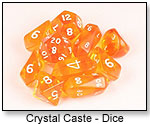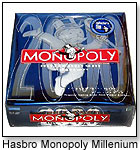 |

Tools:








Patents in the Toy and Game Industry: Part 3Determining the Balance Point in Enforcing Patent Rights
Sometimes, rights to exclusivity are simple to enforce. In a straightforward case, an infringer may simply not be aware of the patent. The right to exclusivity or the payment of royalties may be agreed upon after sending a notice letter, drawing attention to the patent.
 If such a letter is dispatched, it is important to engage patent counsel. Poorly worded correspondence can empower the would-be infringer to “draw first blood” by filing a lawsuit to declare the patent invalid. An effective letter will place an infringer on notice without conferring the right to challenge the patent’s validity. If such a letter is dispatched, it is important to engage patent counsel. Poorly worded correspondence can empower the would-be infringer to “draw first blood” by filing a lawsuit to declare the patent invalid. An effective letter will place an infringer on notice without conferring the right to challenge the patent’s validity.
Sometimes, a notice letter is insufficient for parties to agree. The alleged infringer may hold a different opinion than the patent-holder on whether the patent is infringed. If two parties cannot agree on the amount of a fair royalty payment — another possibility — the question becomes whether to litigate or continue to pursue a business resolution.
15 FACTORS INFLUENCE DAMAGE ANALYSIS
In U.S. patent litigation, courts award infringement damages in the form of lost profits and/or a reasonable royalty. Because most patent plaintiffs cannot meet the evidentiary burdens to recover lost-profit damages, damages are commonly awarded as reasonable royalty.
The amount requires a determination of the royalty rate and the royalty base: Rate x Base = Damages.
A court considers 15 factors (the Georgia-Pacific factors) in the damages analysis. These factors roughly fall into categories of:
a) royalty rates paid for the litigated patent or analogous licensed patents
b) the profitability of the product made under the patent
c) the nature of the commercial relationship between the plaintiff and defendant
d) the effect of sales of non-patented components with the patented components
e) the portion of profit attributable to the invention.
The economic relevance of these areas is typically presented at trial via patent damages experts, opining on a reasonable royalty. Typically, the patentee’s damages expert and the defendant’s damages expert respectively set a lower boundary and an upper boundary of the royalty rate and damages amount. The jury or court usually awards some number in between.
TOY INDUSTRY CALCULATIONS ARE MORE PREDICTABLE
A survey of U.S. District Court and appeal cases in recent years shows movement toward a more objective — and thus more predictable — determination of patent infringement damages, which align with the categories of a) analogous licensed rates and b) profitability of the patented article.
The toy industry appears to fall into the category where a strong history of licensing rates makes the damages calculations relatively more predictable in comparison to other industries. Widely available information allows a rough estimate of a likely damages figure.
HASBRO CASE SHOWS FORMULAIC OUTCOME
 One example is the case of Bowling v. Hasbro. Michael Bowling of Crystal Caste invented a gem-shamed game die and successfully obtained a patent. Dice included as part of Hasbro’s Monopoly Millennium Edition and other special edition games were determined to infringe Bowling’s patent. One example is the case of Bowling v. Hasbro. Michael Bowling of Crystal Caste invented a gem-shamed game die and successfully obtained a patent. Dice included as part of Hasbro’s Monopoly Millennium Edition and other special edition games were determined to infringe Bowling’s patent.
During the damages phase of trial, the court determined that the analysis of Bowling’s damages expert lacked credibility. Surprisingly, even without support of an expert’s report, the court awarded damages skewed to Bowling’s favor. This award was based on evidentiary testimony of Hasbro employees and well-established industry tables.
The data compilations used in the Hasbro case included “Inside Santa’s Workshop” and “The Toy and Inventor’s Handbook.” It was noted that 5 percent of a toy’s net sales was a standard rate, and that the rate was lowered to 3 percent if the toy had other obligations, such as another inventor or third-party license. The jury returned a damages figure in the middle, resulting effectively in a rate of 4 percent in the amount of $446,182.
CONSIDER MULTIPLE ANGLES IN LICENSING RATES
Despite the formulaic outcome in the Hasbro case, analogous license rates should be considered from multiple angles. In most cases where analogous licenses are offered to support a license rate, there is incentive for each party to point to differences in the license agreements, such as their term, scope or duration, to devalue their evidentiary weight and worth in damages assessments during litigation.
As a related matter, the relationship of the parties (c) will help establish the weight accorded to such license rates. In Hasbro, Bowling offered evidence that he and Hasbro stood in a supplier-customer relationship, that the license would be an exclusive license, and that the market-timing of the Monopoly Millennium Edition would have led to a higher rate.
When the available data and evidence fall in line with the above categories, it is easier to ascertain a range of damages that may be assessed for patent infringement. Such information can be used to determine the point at which to settle a case and inform parties of an appropriate settlement or licensing amount.
“ENTIRE MARKET VALUE” CAN LEAD TO SIGNIFICANT AWARDS
At the opposite end of the spectrum, the 15 factors considered for royalty determinations continue to provide flexibility. The flexibility of application, and unpredictable amounts of damages, are more prevalent when facts fall into categories d) the effect of sales of non-patented components with the patented components; and e) the portion of profit attributable to the invention. Both of these echo considerations that are analyzed when a court applies the “entire market value rule.”
This rule allows damages to be recovered on a base of products that include not only the patented invention but also non-patented components. This increases the damages awarded. While these typically arise in computer and software patents, this also came into play in the Hasbro case, where the damages for infringing the game dice patent were based on the price of the entire Monopoly game.
With the rise of computer, software and online interaction in the toy and gaming industry, the categories d) and e) and the “entire market value rule” may be of significant interest to certain sectors. It is in these cases where damages calculations remain the most unpredictable and show the highest awards.
Patentees take advantage of the entire market value rule where a patent infringer’s marketing and business practices tend to show sales of whole functional units including patented and commodity parts. This point is often easily demonstrated by reviewing the infringers’ own marketing literature. In fact, Bowling made productive use of the fact that advertisements of Monopoly Millennium Edition highlighted the inclusion of the special-shaped game dice. Defendants should ready themselves for a long and contentious fight when their own marketing materials tout the patented items.
NEW BUSINESS EXPANDS DAMAGES POTENTIAL
Finally, in areas with new business models, the baseline against which a royalty rate can be applied grows murky, often to the benefit of the patent holder. In the wireless communications area, one court allowed patent infringement damages to be assessed based on cumulative airtime value for the wireless communications in addition to sales of an infringing handset. The area of online gaming may be able to employ such a damages model in patent protection and enforcement. New and wide-ranging damages baselines could lead to an escalation in damage awards, warranting a long, hard fight for patent holders.
Patent litigants would be well advised to consider whether they fall into the first categories where they may be in a better position to assess their costs and downside risk, or whether they fall into the second categories where predictability remains relatively elusive and new business practices and models allow for greater openings to expand the patent damages base.
SEE ALSO:
Patents in the Toy and Game Industry: Part I
How a Patent Portfolio Bolstered LEGO's Bottom Line
Patents in the Toy and Game Industry: Part 2
Securing a Provisional and Using Patents to Grow
 Writer's Bio: Writer's Bio: Susan Perng Pan is partner in the Washington, D.C., office of the global intellectual property firm, Sughrue Mion PLLC. She litigates multi-party complex patent disputes before several U.S. federal district courts, the U.S. International Trade Commission, and the U.S. Federal Trade Commission. Her practice also includes preparing and prosecuting patent applications, appeals and interferences before the U.S. Patent and Trademark Office. She may be contacted at span (at) sughrue.com. Read more articles by this author
THIS BANNER IS AN AD:

• • • • • • • • • • • • • • • • • | • • • • • • • • • • • • • • • • |
Back to TDmonthly's front page
|  |
Advertise on TDmonthly

|

